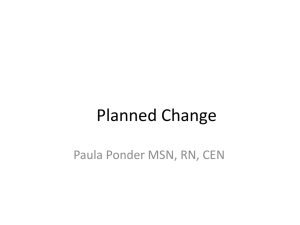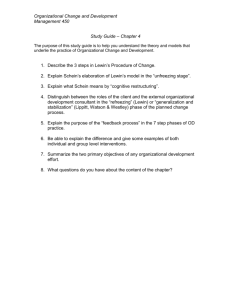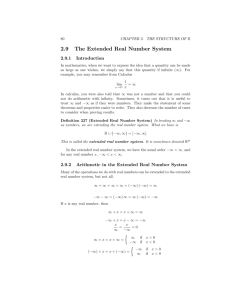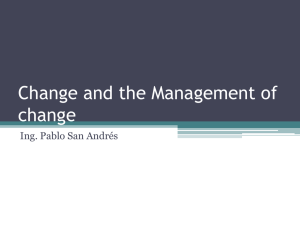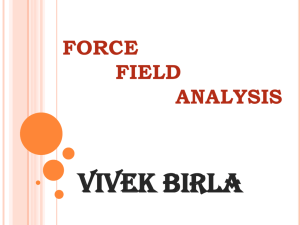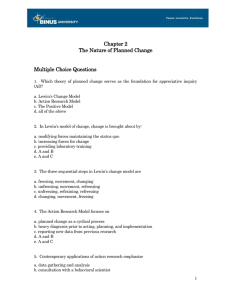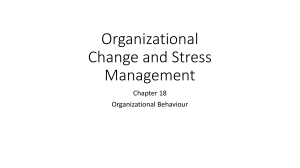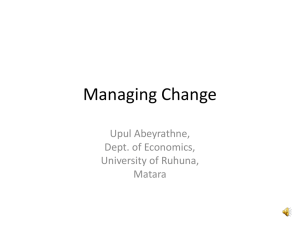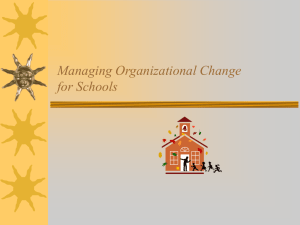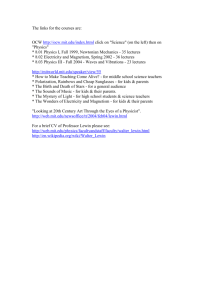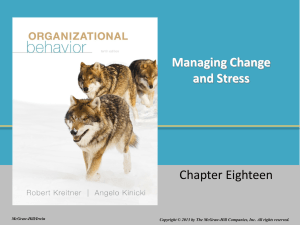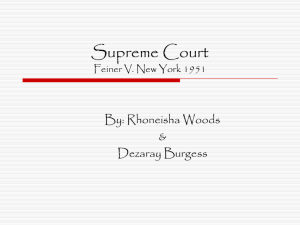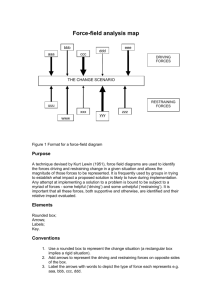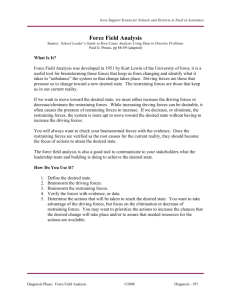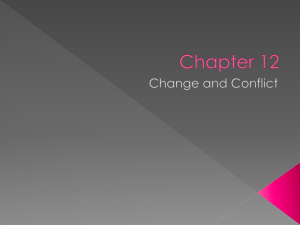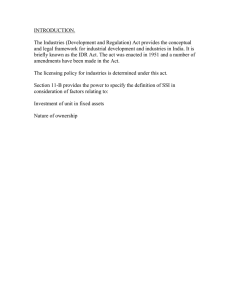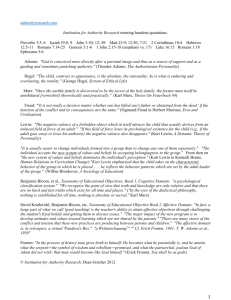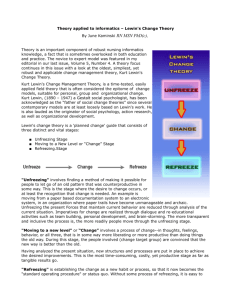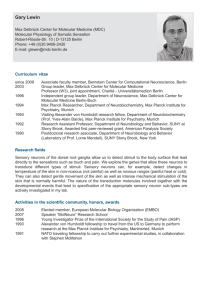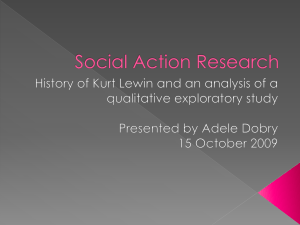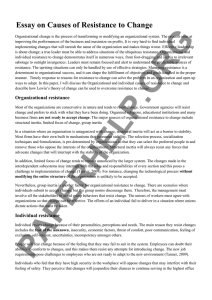Three Phases of Planned Change (Lewin 1951)
advertisement
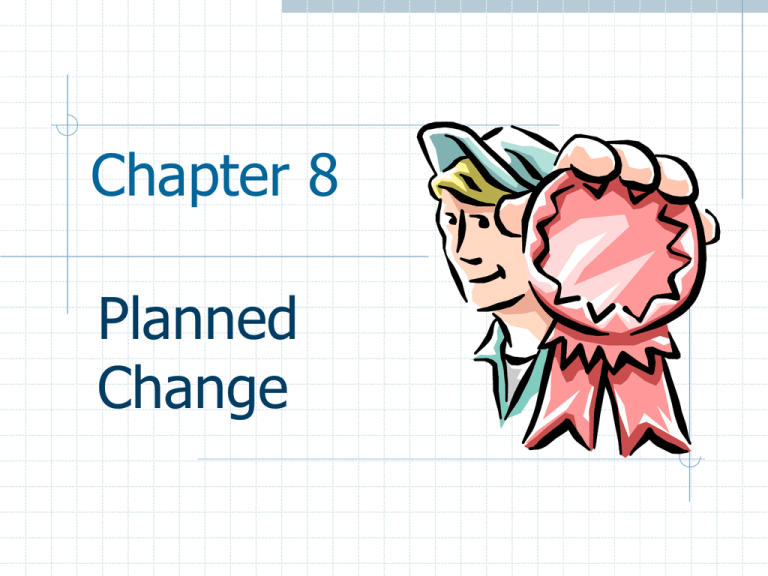
Chapter 8 Planned Change Murphy (1999) suggests that “change is inevitable, but growth is optional.” A fundamental difference in management and leadership is that managers continue the status quo and leaders embrace change. Types of Change Planned change Unplanned change or change by drift Socialization or indoctrination change Reactive or systems change Intrapersonal change Developmental or maturational change Change Agents Persons skilled in the theory and implementation of planned change Regardless of the type of change, all major change brings feelings of achievement, loss, pride, and stress. Planned change, in contrast to accidental change or change by drift, is change that results from a wellthought-out and deliberate effort to make something happen. 3 Good Reasons for Change 1. Change to solve some problem. 2. Change to make work more procedures more efficient. 3. Change to reduce unnecessary workload. Lewin (1951) identified several rules that should be followed in implementing change: 1. Change should only be implemented for good reason. 2. Change should always be gradual. 3. All change should be planned, and not sporadic or sudden. 4. All individuals who may be affected by the change should be involved in planning for the change. Driving and Restraining Forces Goal: Return to School Forces driving to reach the goal Forces restraining from reaching the goal Opportunity for advancement Low energy level Status, social gratification Limited financial resources Enhanced self-esteem Unreliable transportation Family supportive of efforts Time with family already limited Pay increase Three Phases of Planned Change (Lewin, 1951) 1. Unfreezing 2. Movement 3. Refreezing Change Agent Strategies (Bennis et al, 1969) Rational–empirical Normative–reeducative Power–coercive Resistance: The natural and expected response to change Degree of resistance for each individual depends on four things: 1. Their flexibility to change 2. Their evaluation of the immediate situation 3. The anticipated consequences of the change 4. Their perceptions of what they have to lose and gain —Silber (1993) Ten Emotional Phases of the Change Process 1. Equilibrium 2. Denial 3. Anger 4. Bargaining 5. Chaos 6. Depression 7. Resignation 8. Openness 9. Readiness 10.Reemergence (Adapted from Perlman & Takacs, 1990). Bushy and Kamphuis (1993), building on that work of Rodgers (1983), identified six behavioral patterns commonly seen in response to change: innovators, early adapters, early majority, late majority, laggards, and rejectors. Pesut (2000) classifies individuals as either crusaders or tradition bearers in response to their propensity to seek change. Perhaps the greatest factor contributing to the resistance encountered with change is a lack of trust between the employee and the manager or the employee and the organization. Whenever possible, all those who may be affected by a change should be involved in planning for that change. When information and decision making are shared, subordinates feel that they have played a valuable role in the change. Porter-O’Grady (2003) suggests that the manager’s behavior is the single most important factor in how people in the organization accept change. Stages of Organizational Development Birth Youth Maturity Aging Gardner (1990) states: The only way to conserve an organization is to keep it changing. “The significant problems we face cannot be solved at the same level of thinking we were at when we created them.” —Albert Einstein
